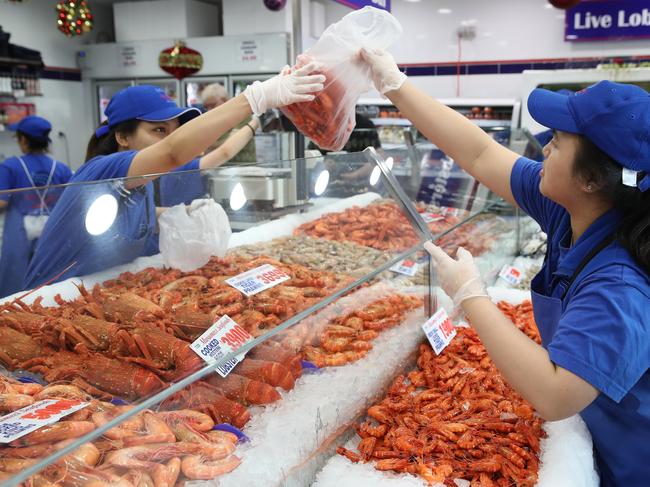Grocery prices: What’s going up, what’s coming down in Australia
New data reveals which groceries are going up in price and which ones will save you money. See what’s on the list.
Costs
Don't miss out on the headlines from Costs. Followed categories will be added to My News.
Grocery price hikes continue to hit Aussies hard, with 12 out of 14 supermarket categories more expensive than just three months ago.
Grocery comparison site Frugl’s new Grocery Price Index revealed dairy/eggs and bread/bakery items experienced the highest price jumps between the June and September quarters. Dairy and eggs were up 9.1 per cent and bread and bakery items were 4.9 per cent dearer.
There was some relief, however, across fruit and vegetables (down 6.6 per cent) and pork (down 2.7 per cent) – although both are still more expensive than last year.
Compared to the September quarter of 2021, every single category is now costing Aussies more, led by household and cleaning items (up 16.1 per cent year on year), beef (14.4 per cent) and dairy and eggs (13.7 per cent).

Frugl chief executive Sean Smith said surging inflation was affecting grocery items at higher levels than the official CPI (consumer price index) rate.
“It’s not all bad news however, and within the categories there are pockets of products that are remaining good value for shoppers, with pork and seafood in general both holding lower prices than other meat categories,” Mr Smith said.
“There have also been considerable price drops within fruit and vegetables as crops damaged from flood events earlier in the year have been replaced, with supply returning to pre-flood levels, therefore alleviating some of the very high prices seen in the June quarter.”
The Grocery Price Index report showed green beans were now 30-40 per cent cheaper than they were in June across most states.
Meanwhile, butternut pumpkin prices were down 20 per cent in New South Wales and Western Australia, and broccoli prices had been slashed by more than 60 per cent in Queensland.
But affordable fresh produce may not last long as extreme weather has returned to disrupt crops.
Mr Smith also predicted further price increases for dairy and eggs, bread and bakery, and potato-based products.
“Almost all input costs have increased for dairy farming, including cost of feed, fertiliser costs, transport costs, fuel and energy costs, packaging costs and cost of labour, with many dairy operations deciding to cease their operations altogether, adding further challenges to supply,” he said.
“The pressures on dairy farmers are now so significant that further price rises are likely, with some analysts forecasting increases as high as 30 per cent in coming months.”

He said the egg industry had also faced challenges.
“Reduced demand from restaurants and cafes during Covid-19 lockdowns saw many producers scale down egg-producing flock sizes,” he said.
“Now with labour shortages and renewed demand – particularly for free-range eggs which have higher production costs – the results are high prices for the foreseeable future.”
Supermarket giant Coles has locked its prices on more than 1100 products, including bread, pasta, eggs, nappies and sausages, since August to help ease the cost-of-living pressures.
“These (prices) will not rise until at least the end of January next year giving customers certainty every time they shop,” a Coles spokesman said.
“The prices of 500 more products have been lowered over the past few months including juice, breakfast cereal, chicken, steak, ice cream, paper towel and toilet paper.”

The spokesman said Coles would also have several specials on festive food items to help customers spread the cost of Christmas over the coming months.
Meanwhile, Woolworths has more than 5000 specials each week and recently launched its biggest seasonal priced drop campaign on more than 400 grocery staples.
“We understand the pressures facing so many Australians … We’re working with our suppliers to sensitively manage industry-wide inflation,” a Woolworths spokesman said.
“The price of fruit and veg is influenced by a range of factors, including availability, weather, demand and seasonality. When the market price drops, we work to pass those savings on to our customers.”
Originally published as Grocery prices: What’s going up, what’s coming down in Australia




